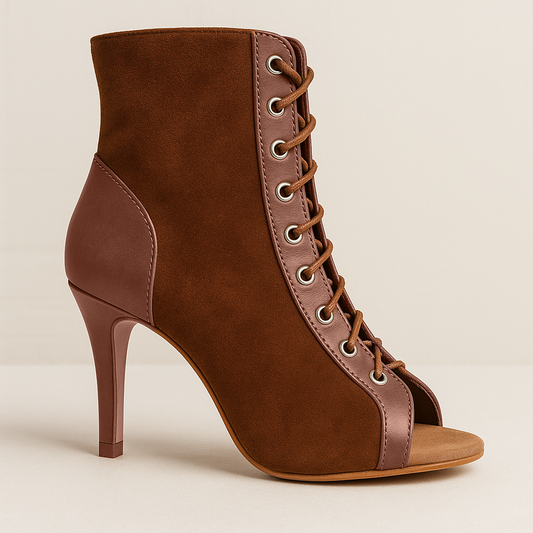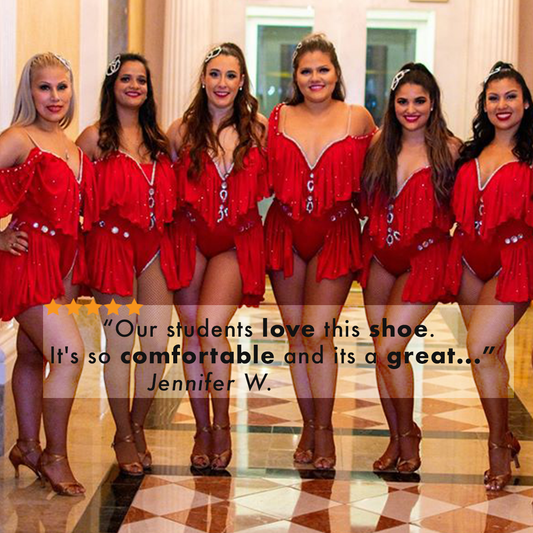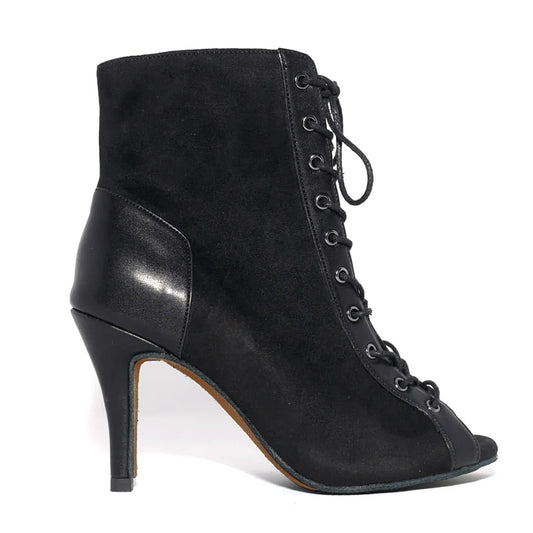
Learning Salsa for the first time? You are in for the experience of the lifetime! Salsa dance is romantic, passionate, and fiery because it demands flexibility and timing.
If you’re learning salsa for the first time then you might have a lot of questions about it, like what’s the difference between Salsa on 1 and Salsa on 2.
Most will tell you that Salsa on 1 and Salsa on 2 differs only in timing but there are subtle differences between these dance styles other than the beat you are breaking on. You can take your dancing skills to the next level by figuring out the difference between these dance styles.
It’s All About Mambo Timing
Essentially, On 1 and On 2 differs in timing and to understand the difference between these dance styles, you have to learn the hallmark of Mambo timing.
Rock Step on 2 - 3 and a slow step on 4-1 is the traditional Mambo timing. This means the footwork matches with the clave beat - the rhythmic pattern used in most Afro-Cuban music and dance. The footsteps of the Rock-Step fall in between the clave beats during the second 4 beats. By figuring out when to take a step, you'll dance in tune with the clave.

The basic step in salsa is a quick-quick-slow, quick-quick-slow rhythm on beats 1-2-3, 5-6-7 of an 8 count. Generally, no steps are taken on beats 4 and 8. This makes counts 4 and 8 as the “slow” salsa rhythm. This slow rhythm is what sets On 1 and On 2 apart. Each dance style requires you to step forward and back at different counts.
Break steps refer to the change of direction as you dance the Mambo. It’s essentially a 2 step sequence in which the second step is taken in the opposite direction as the first step.
Salsa on 1 and Salsa on 2: The Difference
The Timing
Salsa On 1: This is the most popular of the two Mambo timing because the counting is much simpler so figuring out the timing is easier.
When dancing to Salsa on 1, the lead breaks forward on the 1 then back on the 5. Then the break backward is on the 1 and then forward on the 5. The slow counts start immediately before the break steps.
LA-style salsa follows the On 1 timing. This timing is popular because it’s closest to the dance structure of traditional Mambo. The beat is also easier for most people to follow so it’s beginner-friendly. The downside is that the Rock-Step on 1 minimizes the interlocking relationship between the music and the dance step.

Salsa On 2: This dance style dances on or with the clave. Salsa On 2 was developed by the Mambo King Eddie Torres, a NYC-based dancer, dance teacher, and master choreographer. On 2 is credited for keeping the Salsa sensation alive in the Hustle era. New York-style salsa follows the On 2 timing.
In Palladium-era Mambo, On 2 is danced to beats 2-3-4, 6-7-8. Eddie Torres’ On 2 keeps the Rock-Step on 2 - 3, keeping the close relationship between the clave and the dance step. The lead breaks forward on the 6 then back on the 2. Then the break backward is on the 6 and then forward on the 2.
Between On 1 and On 2, the latter’s dance moves are smoother and the turn patterns are more complex. As such, On 2 isn’t as beginner-friendly as On 1. But once you’ve mastered the steps, you’ll be a sensation on the dance floor!
The Rhythm
While watching performers dance Salsa on 1 and Salsa on 2, On 1 looks and feels faster and more staccato than On 2. On 1 feels faster because of the slow count.
Slow counts occur immediately after the breaking steps and on 1, you have very little room to turn. Because most of the turns are typically complete, the follow uses the slow count to exit her turn rather than making turns.

Some say Salsa on 2 feels more complex to execute and that’s because the three footfalls are clustered at one end, just before the pause. This gives the impression that On 2 is less structured but demands complicated footwork. Also, On 2 looks complicated because it gives the dancers more time to execute the turns. On 2, the steps may be done at slightly different counts but all the break forward and back are on counts 2 or 6, something that’s similar to the slaps of the Conga.
The Connection to the Music
One might think that a dancer could dance well as long as his timing is perfect but contrary to this, one must develop his or her musicality to become a good salsa dancer too. You see, salsa on 1 and Salsa on 2 connects to the music differently. Honing your musicality will make a world of difference in your performance. It will change the feel of the performance because each dance style follows different punctuation of the music at different times.
Unless you're an experienced dancer, listening to Latin music and discerning the clave beat is difficult. That's because the overlay of rhythm patterns tends to be complex and the clave beat is masked by the rhythm patterns. But don’t worry, musicality develops over time.

What sets On 1 apart from On 2 is that it connects to the melody of the song within a set of 8 counts. On the other hand, On 2 follows the rumba clave - it connects to the beat of the instruments. Between these dance styles, On 2 elevates the music by highlighting the instruments through dancing while On 1 is all about feeling the melody.
Salsa on 1 and Salsa on 2: Which Dancing Style Should You Follow?
Should you follow Salsa on 1 or Salsa on 2? Which is better? The choice is a matter of personal preference because neither is better than the other.
Between the two, Salsa on 1 is more beginner-friendly. Since the steps start at 1 and end on 8 and the musical sentence is on repeat, it's much easier to figure out the timing and connect to the phrasing or melody. This version is also much simpler, allowing you to figure out the timing quickly. If you're the type who loves to dance his or her heart out to big band songs with rich melodies of classic salsa, Salsa on 1 will suit your style perfectly.
Salsa on 2 is best danced with big band music because the movements connect with the instruments. Classic salsa music with conga, clave, bongo bell (campana) and/or bass (bajo) goes perfectly with Salsa on 2.
If you're all about variety, Salsa on 2 is a great choice as well. The movements highlight the instruments, which creates a deeper, more connected performance. Also, if you'd like to improve your salsa musicality, choose salsa on 2 because it will sharpen your ears.
References
https://www.quora.com/What-is-the-difference-between-Salsa-on-1-and-Salsa-on-2
https://thedancedojo.com/blog/salsa-timing-the-difference-between-salsa-on1-and-on2/
http://www.worldsalsafederation.com/articles2.html
https://dancefeverstudios.com/difference-between-salsa-on1-and-on2/
https://www.reddit.com/r/Salsa/comments/85owk4/understanding_on1_vs_on2/








